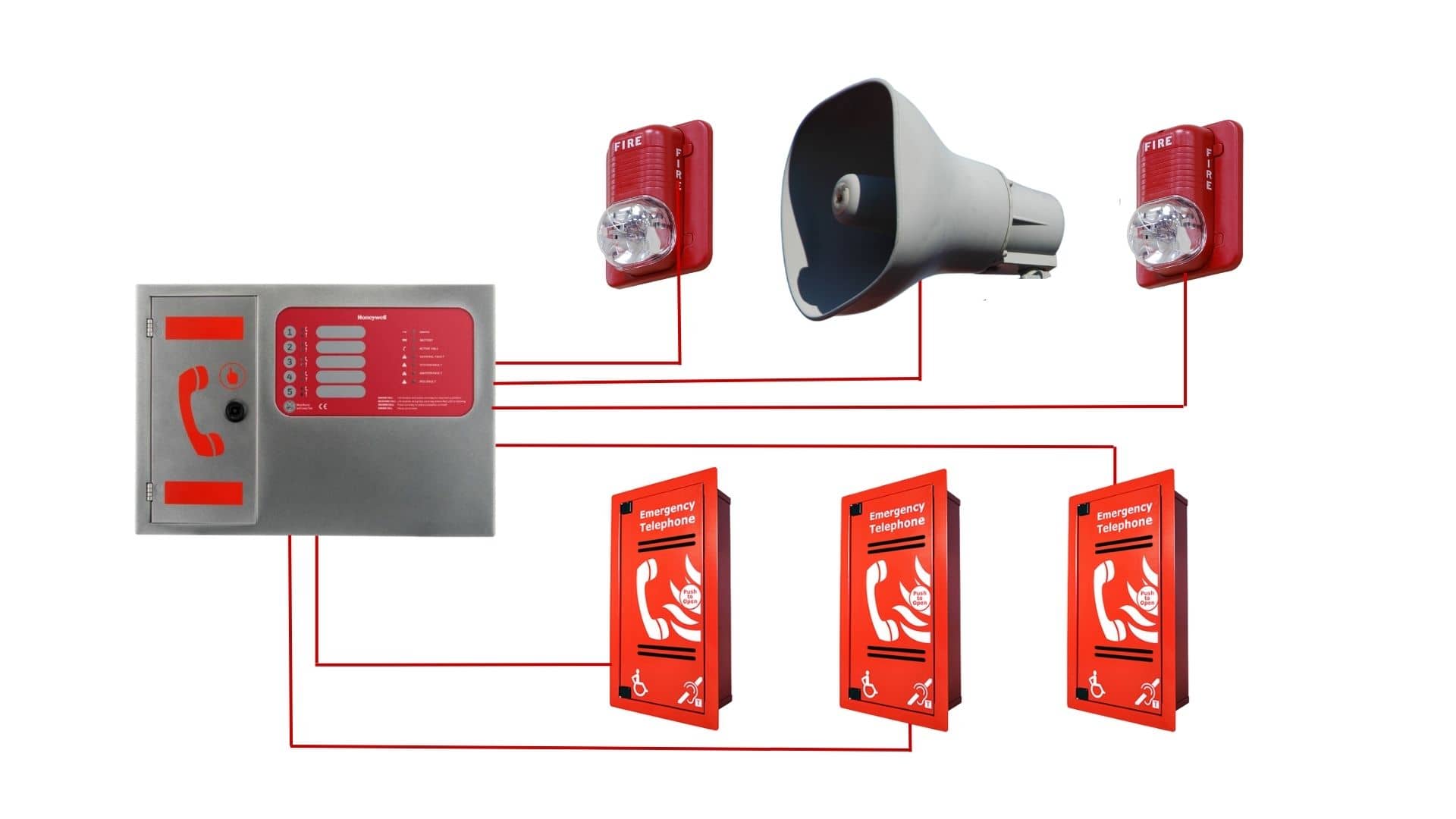Emergency Voice Communication Systems or EVC Systems are vital systems that ensure effective communication during emergencies. These systems are designed to provide clear, intelligible voice messages to help people evacuate safely and quickly.
Components of EVC Systems
A typical EVC System is made up of several components, including a microphone, amplifier, loudspeaker, and control panel. The microphone is used to transmit voice messages to the amplifier, which amplifies the signal and sends it to the loudspeaker. The control panel is used to manage the system, including activating and deactivating the system and selecting the appropriate message.

Types of EVC Systems
There are generally two types of EVCS; Type A and Type B. Type A systems are designed for larger buildings and have multiple loudspeakers connected to the same amplifier. Type B systems are designed for smaller buildings and have individual amplifiers for each loudspeaker.
Wiring and Power
The wiring and power of an EVCS are critical components. The wiring must be done correctly to ensure that the system functions correctly. The power supply must be sufficient to power the system, including the amplifiers and loudspeakers. The power supply must also be backed up by a battery to ensure that the system continues to function during a power outage.
Testing and Maintenance
Testing and maintenance are critical to ensure that an EVCS is functioning correctly. Regular testing ensures that the system is working correctly, and any faults can be identified and addressed promptly. Regular maintenance, including cleaning and replacement of components, ensures that the system remains in good working condition.


Special Application to the FPSO Industry
FPSOs are used to extract oil and gas from offshore fields, and the safety of the personnel on board is of paramount importance. Emergency Voice Communication Systems (EVCS) are critical components of the safety systems on FPSOs.
In the event of an emergency, the EVCS allows the crew to communicate effectively and quickly with each other, the emergency services, and the onshore support team. The EVCS also provides guidance on evacuation procedures and other safety-related messages, helping to ensure the safety of everyone on board.
Challenges in the FPSO Industry
The harsh environment and remote location of FPSOs present unique challenges that must be taken into account when designing and installing an EVCS.

Components of EVCS for FPSOs
Extreme temperatures and corrosive saltwater can damage equipment. Therefore, EVCS for FPSOs need to be specially designed to withstand the harsh environment and provide clear, intelligible voice messages. The components of the system include microphones, amplifiers, loudspeakers, and control panels. The microphones are located in strategic locations throughout the FPSO, ensuring that all areas are covered. The amplifiers and loudspeakers are designed to withstand the harsh environment, and the control panel is used to manage the system.
Integration with Other Systems
EVCS for FPSOs must integrate with other safety systems, such as fire alarms and emergency lighting. This integration ensures that all systems work together during an emergency, providing clear, concise messages to everyone on board.
Testing and Maintenance
Regular testing and maintenance are critical to ensure that the EVCS for FPSOs is functioning correctly. Regular testing ensures that the system is working correctly, and any faults can be identified and addressed promptly. Regular maintenance, including cleaning and replacement of components, ensures that the system remains in good working condition.

Why Choose Vivo Asia?
Vivo Asia is an expert team of engineers and technicians, who specialize in the installation of sound systems for harsh and hazardous environments. Given the critical nature of EVC systems, it is essential to get the best team for the installation, testing and commissioning of the system.

